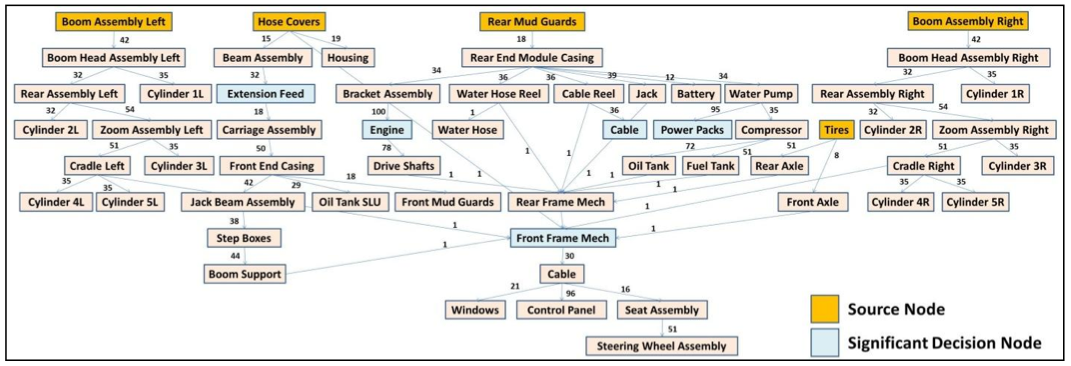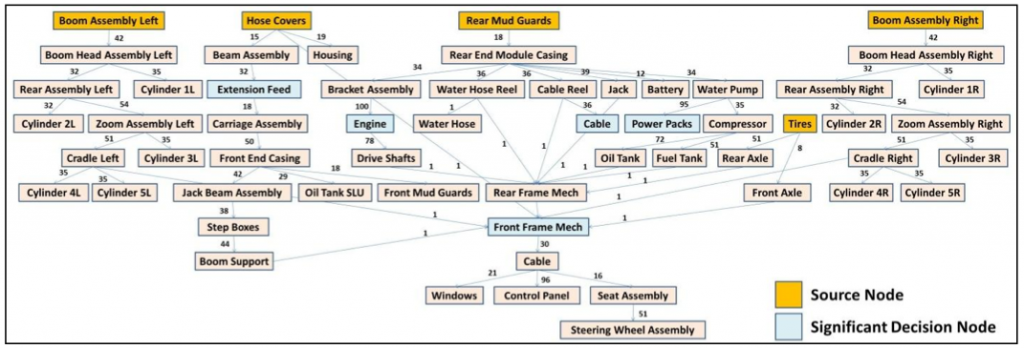Abstract: Decision-making methodologies for evaluating a product’s end-of-life options have become a significant area of research. Extensive work has been carried out in the area of product recovery, e.g. module-based disassemblability, reverse logistics, remanufacturing, material recyclability, among others. Some of these methods use graphical representations in the form of disassembly trees and/or networks to find feasible solutions with computational approaches, but have not been made applicable to larger, more complex electrohydraulic mechanical systems. The work presented in this paper aims to apply a disassembly assessment technique by comparing a component’s disassembly effort to a reward such as recycling value or energy recovery from recycling. First, the disassembly network is represented by a directed graph where weighted edges represent reward/cost. Next, an implementation of Dijkstra’s algorithm is used to compute the optimal disassembly path that minimizes the sum of the edge weights. Lastly, the optimal disassembly paths for each individual reward are compared to discover the globally optimal disassembly scenario. This method is applied to a real-world case study of an underground mining drill rig with direct contributions from engineers involved in the development of the machine itself. Specific component recovery options are recommended based on the methodology and alternative design practices are suggested to improve product recyclability.


